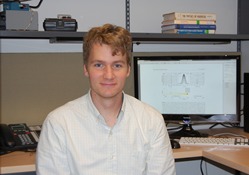Program Information
Accuracy of Acoustic-Based Proton Range Verification in Water
KC Jones1*, F Vander Stappen2 , CM Sehgal1 , S Avery1 , (1) University of Pennsylvania, Philadelphia, PA, (2) Ion Beam Applications (IBA), Louvain-la-neuve, Walloon Brabant
Presentations
SU-C-207A-4 (Sunday, July 31, 2016) 1:00 PM - 1:55 PM Room: 207A
Purpose: To determine the accuracy and dose required for acoustic-based proton range verification (protoacoustics) in water.
Methods: Proton pulses with 17 μs FWHM and instantaneous currents of 480 nA (5.6 x 10⁷ protons/pulse, 8.9 cGy/pulse) were generated by a clinical, hospital-based cyclotron at the University of Pennsylvania. The protoacoustic signal generated in a water phantom by the 190 MeV proton pulses was measured with a hydrophone placed at multiple known positions surrounding the dose deposition. The background random noise was measured. The protoacoustic signal was simulated to compare to the experiments.
Results: The maximum protoacoustic signal amplitude at 5 cm distance was 5.2 mPa per 1 x 10⁷ protons (1.6 cGy at the Bragg peak). The background random noise of the measurement was 27 mPa. Comparison between simulation and experiment indicates that the hydrophone introduced a delay of 2.4 μs. For acoustic data collected with a signal-to-noise ratio (SNR) of 21, deconvolution of the protoacoustic signal with the proton pulse provided the most precise time-of-flight range measurement (standard deviation of 2.0 mm), but a systematic error (-4.5 mm) was observed.
Conclusion: Based on water phantom measurements at a clinical hospital-based cyclotron, protoacoustics is a potential technique for measuring the proton Bragg peak range with 2.0 mm standard deviation. Simultaneous use of multiple detectors is expected to reduce the standard deviation, but calibration is required to remove systematic error. Based on the measured background noise and protoacoustic amplitude, a SNR of 5.3 is projected for a deposited dose of 2 Gy.
Contact Email:

